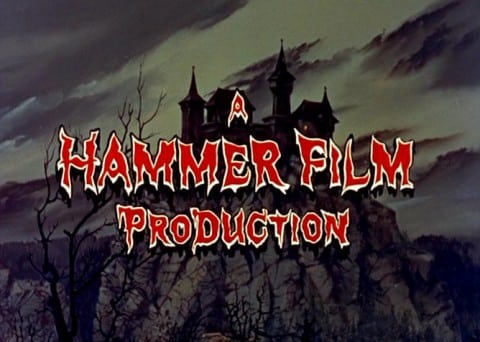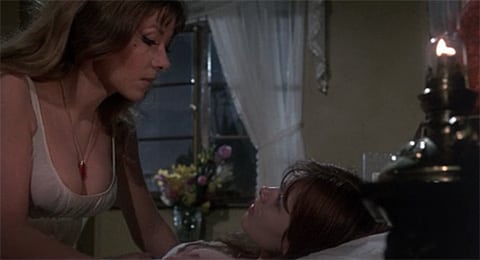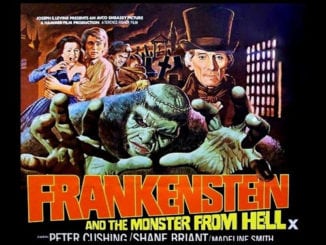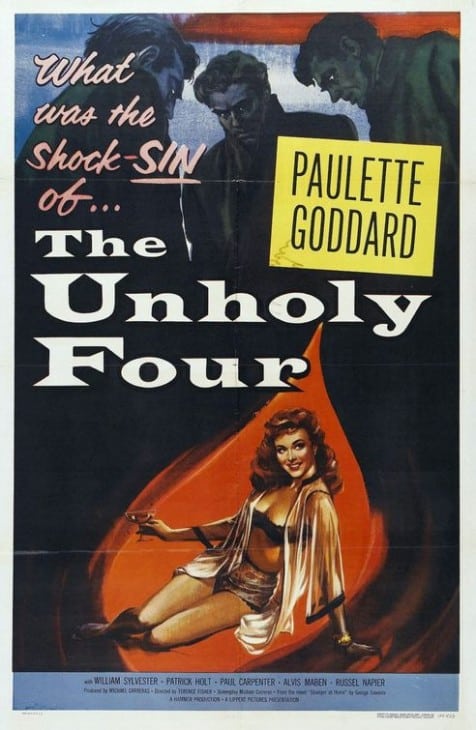The Vampire Lovers (1970)
Directed by: Roy Ward Baker
Written by: Harry Fine, Michael Style, Sheridan Le Fanu, Tudor Gates
Starring: Ingrid Pitt, Madeline SMith, Peter Cushing, Pippa Steel
UK
AVAILBLE ON DVD
RUNNING TIME: 91 mins/ 90 mins
REVIEWED BY: Dr Lenera, Official HCF Critic
1794, Austria. Following the death of his sister, Baron Joaqcum von Hartog vows to destroy the vampiric Karnstein family, and stakes them all except for Mircalla. Several years later, General von Speilsdorf is holding a birthday party and one of the guests is a Countess who has moved into a castle nearby. She is called away to attend to a sick friend, so her supposed daughter Marcilla replaces her and stays on in the house as a guest. Marcilla and Speilsdorf’s niece Laura become the best of friends, but Laura has nightmares of a cat strangling her, keeps growing paler and weaker, and is eventually found dead with two puncture marks in her neck. Then Marcilla disappears….
Probably Hammer’s most iconic film of the 70’s, The Vampire Lovers is a film I recall being rather disappointed by when I first saw it 30 or so years ago. It seemed to lack excitement and not really deserve its reputation as an classic erotic vampire movie. It also seemed in part a rehash of Dracula, but of course Sheridan Le Fanu’s 1871 novella Carmilla, which had previously been adapted as Blood And Roses and Crypt Of The Vampire, was a great influence on Bram Stoker’s novel, something which I failed to realise back then. Of course tastes change and watching it with a more critical eye reveals a great deal to appreciate and admire for a project that began as a purely exploitative exercise. It could do with increasing the excitement at times, notably towards the end, and there are a few inconsistencies and vague elements which suggest that the script, which seems overstuffed [too many main characters for a start] and a bit too verbose, was rushed. However, there are a surprising number of poetic touches and moments in a film that explores more than any other Hammer film the state of the vampire, and which features their most sympathetic blood sucker. Director Roy Ward Baker seems really taken with this project as he provides more overt style than usual, while it’s also surprisingly faithful to its source material, just expanding and adding here and there, plus of course making the lesbianism aspect more overt, though only on a couple of occasions does the latter seem unnecessary given the atmosphere of eroticism. And Ingrid Pitt is just magnificent in her role.
It was Fantale Films, comprising producers Harry Fine and Michael Style, and writer Tudor Gates, who proposed this project to Hammer, and American-International Pictures were conveniently interested in being involved with a vampire film taking advantage of censorship restrictions, though, despite the ‘X’ rating about to be raised from ’16’ to ’18’, the BBFC initially rejected Gates’s script until Hammer boss James Carreras said to them that the lesbianism was in Le Fanu’s story. BBFC head John Trevelyn still wrote Carreras a letter to keep this film, “within reasonable grounds”. Shirley Eaton was considered as Carmilla, but was considered to be too old. AIP asked for a well known male lead, so Peter Cushing was added. The role of the Man in Black was offered to Christopher Lee, but he declined the role and John Forbes-Robertson was cast instead. The film was shot at Elstree Studios and Moor Park Mansion, Hertfordshire. Ingrid Pitt’s fangs kept falling out and dropping into Kate O’Mara’s cleavage during one scene, prompting gales of uncontrollable laughter from both actresses. Finally, Pitt grabbed some chewing gum from the mouth of one of the crew members and used it to secure her vampire teeth. The UK cinema version lost the opening decapitation and shots of Carmilla kissing Emma’s breasts due to the BBFC, and the same print was featured on all home releases until 2002. The US version removed two more gore shots and shortened the afore-mentioned scene even further. Some DVDs contain an alternate edit of Carmilla coming naked out of the bath which cuts away and then back again. Hammer would never recapture the big commercial success of The Vampire Lovers again.
As Douglas Wilmer’s Baron von Hartog’s doom-laden voice narrates what are flashback events, we have a tremendously eerie and atmospheric shot of a shrouded, hooded figure rising out of the fog, though I think this would have been even more eerie and atmospheric without the narration. Anyway, after another great shot of the figure moving down the busy village street and the discovery of a bitten corpse, the Baron decapitates the creature, who is revealed to be a beautiful woman who almost has the Baron under her power and nearly bites him. Quite wonderful stuff despite the typically poor looking head cutting, and I like both the new addition to the lore that a vampire cannot survive his or her resting place without his or her shroud, and the fact that this flashback is expanded during the climax. Fast forward a great many years [it’s not specified but von Hartog is considerably older when he reappears], and a certain lady is causing heads to turn at a dance. She is Marcilla, and because her mother goes away, she goes to stay at the household of General von Speilsdorf. Speilsdorf’s niece Laura has nightmares, and soon perishes [oddly she never returns from the grave], after which Marcilla disappears. Faking a carriage break-down, Marcilla’s mother then leaves her daughter – now using the alias ‘Carmilla’ – at the residence of a Mr. Roger Morton. His daughter Emma also starts to have the same nightmares, though Carmilla seems to actually fall in love with her. To contain her blood lust though, Carmilla must kill various inhabitants of the local village, as well as enslave Emma’s governess, Madame Perrodot.
There are times when it seems a bit lazy that Carmilla does virtually the same things in the second house as the first, but things do get more and more interesting. Obviously a lesbian but not above using men if she needs to, Carmilla is certainly uninhibited, but she also clearly doesn’t like being a vampire. Moments like when she stands on a terrace in the sunset, tears glinting in her eyes while she listens to ancestral echoes that condemn her to her fate, and when she sees a funeral carriage pass by, shudders and says to Emma, “you must die, everybody must die”, go some way to making us feel just a bit sorry for her. She’s probably being manipulated by her “aunt” and the rather silly Dracula-like Man In Black who follows her around and occasionally bares his fangs, though it’s never made clear who exactly these people are [we’re told near the end that von Hartog killed all the Karnsteins bar one]. And it’s disappointing that the film decides to follow Le Fanu in having Carmilla staked and decapitated while she’s asleep in her coffin, in lieu of a more thrilling climax. There’s quite a bit of blood spilled in the final act, and there are some vampire attacks, replete with some subjective and even shaky camera, and one going for the always effective device of the shadow of an arm before we see the actual arm, which carry a surprising amount of fear with them. However, one shot of Carmilla reflected in a lake as she moves in for the kill shouldn’t be able to happen at all, unless this vampire is even more unique and casts a reflection.
The majority of the film goes for a quite languid, dreamy atmosphere which makes it feel different from much of Hammer. The lesbianism is quite tame by today’s standards, consisting of Carmilla undressing in front of various women, some kissing and cuddling, and Carmilla “going down” on Emma off screen. They don’t even show her biting her victims on the breast. Yet one can see how daring it must have seemed in 1970, and it’s not as if The Vampire Lovers doesn’t contain some of the typical Hammer ingredients, some of which had become virtually parodic by now, like a scene in a pub where a newcomer to the place says that the vampire is a myth. Suddenly the music, laughter and chatter in the pub stops and the land lord says in his best doom laden manner, “not round ‘ere it isn’t, Mr Renton”. Unfortunately Hammer’s budgets were beginning to decrease around now, and, while this film features a wonderful fog-shrouded graveyard, some of the sets don’t quite convince and we can even see some tennis courts by the Speilsdorf house. On the other hand Baker seems quite energised by this one, the handling the black and white nightmare sequences with their quick, dissolving shots of cats eyes and human faces being perhaps the best example of this. And I really do love it when somebody calls Marcilla’s name and, as the camera begins to prowl around and go outside, the call echoes through the empty chambers of the house and down the terrace outside, where the wind is blowing around fallen leaves, before the calls merge with older echoes in the cemetery where Carmilla walks. Pure Gothic poetry!
Pitt really does have the hypnotic presence, striking carnality and distant sadness which her role requires, and I can’t think of anyone who would have been better. Madeline Smith’s doll-like looks also make her look great as Emma though she doesn’t really cut it acting-wise. Cushing’s part is very minor, but George Cole is very good and Jon Finch is a stronger young male lead than normal, though his character doesn’t really need to be in the film at all and I wish that Harvey Hall’s Renton, the butler of the Morton household who eventually starts to realise that strange things are happening under his very nose, had been a more prominent character. The score is by Harry Robertson who would go on to do four others for Hammer. His music is very lush sounding, often emphasing a dark beauty over intense horror with only a bit of the typical blood and thunder, and crammed full of different motifs even if none are really memorable. The romantic and sexual moments are especially well scored with a feeling of gloomy helplessness. For some reason, a few bars from the score to Taste The Blood Of Dracula turn up in one passage. I’ve come to the realisation that The Vampire Lovers, while not my personal favourite Hammer 70’s effort, might indeed be a classic of the very minor kind; it at least tries to be a bit fresh and original. It stands as a fascinating footnote in the overall history of horror cinema, where, as it was dying a slow and painful death, the old fashioned, Gothic-styled horror film tried to fight back against the more relevant, modern and frightening new wave of scary movies that was replacing it in cinemas.












Be the first to comment